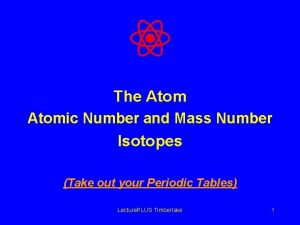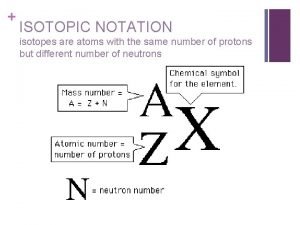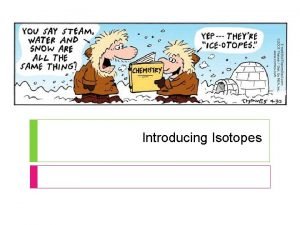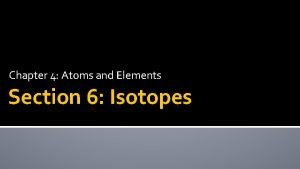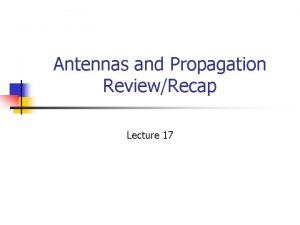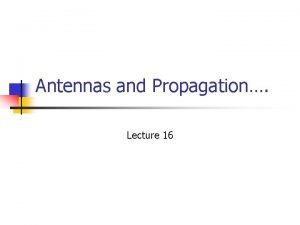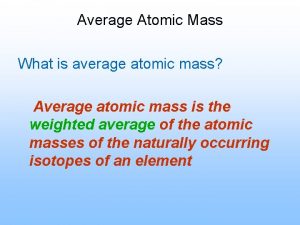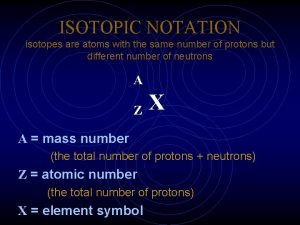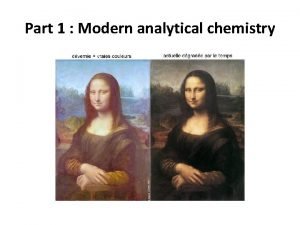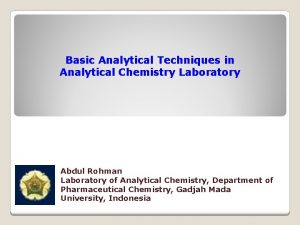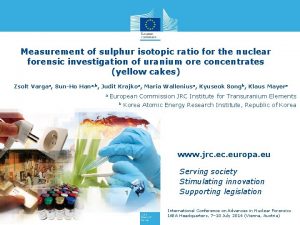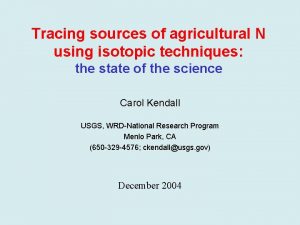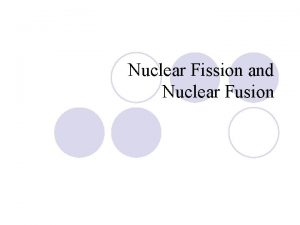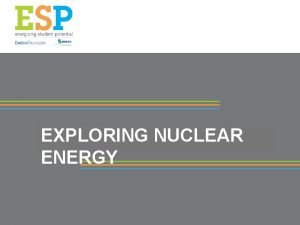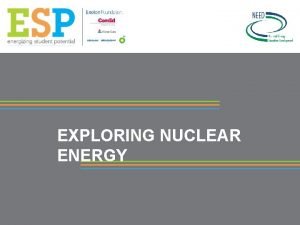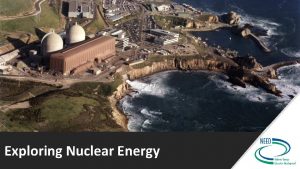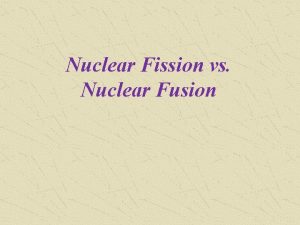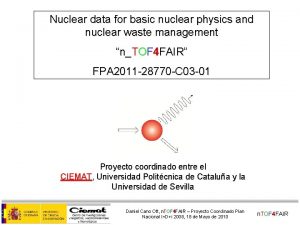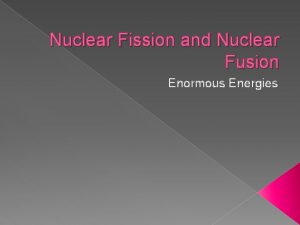Isotopic and Nuclear Analytical Techniques for Health and















- Slides: 15

Isotopic and Nuclear Analytical Techniques for Health and Environment 10 - 13 June 2003, Vienna, Austria 90 Sr IN VARIOUS FOOD AND FOODSTUFFS U. Repinc, L. Benedik, R. Jakopic Department of Environmental Sciences Jozef Stefan Institute, Jamova 39, 1000 Ljubljana, SLOVENIA

Major pathways of radionuclides to man

Radionuclides of interest - produced in fission processes which may contribute significantly to human exposure

Characteristics of strontium 90 Sr (t 1/2 = 28. 7 y, Emax = 0. 546 Me. V) 90 Y (t 1/2 = 64. 1 h, Emax = 2. 28 Me. V) 90 Zr (stable) 89 Sr (t 1/2 = 50. 5 d, Emax = 1. 49 Me. V) 89 Y (stable) IIA. Group of the Periodic Table - chemically similar to calcium - 20 -30% of absorbed Sr is deposited in the bone, 1% is distributed among the blood volume, extracellular fluid, soft tissue, and surface of the bone - internal exposure to Sr-90 is linked to bone cancer, cancer of the soft tissue near the bone and leukemia

90 Sr is considered one of the most hazardous fission products: - high fission yield - has a long physical half-life (28. 7 years) - has a long biological half-life (49. 3 years) - high radiotoxicity due to its tendency to deposit in bones 89 Sr is one of the main component of fallout activity after an accident: - high fission yield - relatively short-lived (50. 5 days), decays to undetectable levels in a few months - it is not considered as hazardous as 90 Sr

Food sampling - individual food items, not total diet samples (to indicate which countermeasures should be taken to reduce population exposure) - radionuclides most likely to be present in terrestrial food and environment or can be rapidly accumulated by fresh water or marine organisms like oysters, clams, shrimp, etc.

Samples selected - foodstuffs for infants milk powder, fruit milk mash, infant milk, wheat flakes - eggs: whites and yolk - sea food golden grey mullet, gilthead seabream, European anchovy, mussels - meat (beef) - freshwater fish: trout - vegetables: cabbage, potato

Strontium separation procedure preconcentration of alkaline elements separation of strontium and calcium K and Si removal Ca removal of Fe, Al

Strontium separation procedure – cont. removal of Ba, Ra, Pb centrifugation on 22 mm diameter planchette, drying determination of the chemical yield by weighing Sr. CO 3 measurement of 89 Sr, 90 Sr/90 Y on beta counter

Beta counting - 22 mm diameter planchettes - calibrated with 90 Sr/90 Y standard 17% counting efficiency, 90 Sr 43% counting efficiency, 90 Y A multilogger LB 5310 low-level gas proportional counter (Berthold Inc. , Bad Wildbad, Germany)

90 Sr activity calculation A - 90 Sr activity in the sample, Bq/kg Sr-90 - counting efficiency for 90 Sr R - count rate of the sample (without background), cpm Y-90 – counting efficiency for 90 Y Rs+b -count rate of the sample and background, cpm m - sample weight (kg) Rb – background count rate, cpm h – decay constant for 90 Y (1. 8022 E-4 min-1) ts – measuring time, sample t – ingrowth time from separation of 90 Sr to counting (min) tb – measuring time, background YSr – chemical yield of the separation

Results TABLE I. RESULTS OF 90 Sr DETERMINATION IN SELECTED FOOD AND FOODSTUFF SAMPLES, Bq/kg FRESH WEIGHT

TABLE II. RESULTS FOR 90 Sr IN FRESHWATER FISH SAMPLES, INCLUDED IN THE KRŠKO NPP MONITORING PROGRAMME

TABLE III. RESULTS OF Sr-90 DETERMINATION IN SELECTED FOOD AND FOODSTUFF SAMPLES, Bq/kg FRESH WEIGHT TABLE IV. COUNCIL REGULATION (EURATOM) NO. 3954/87 OF 22 DECEMBER 1987

Conclusions • activity concentrations in selected food and foodstuff samples are low (below detectable 0. 01 to 0. 9 Bq/kg 90 Sr) • activity concentrations in selected food and foodstuff samples are below maximum permitted levels of radioactive contamination laid down in EU regulations • no significant differences in freshwater fish samples from the vicinity of NPP Krško could be observed due to the operation of NPP • results confirm that selected food and foodstuffs do not represent a health hazard to the population
 Lesson 15 nuclear quest nuclear reactions
Lesson 15 nuclear quest nuclear reactions Fisión nuclear vs fision nuclear
Fisión nuclear vs fision nuclear Isotopic notation example
Isotopic notation example Isotopic notation
Isotopic notation Isotope notation
Isotope notation Platinum-194 superscripts and subscripts
Platinum-194 superscripts and subscripts Neon isotope notation
Neon isotope notation Facts about electrons
Facts about electrons Isotopic antenna
Isotopic antenna Radiation mechanism of antenna
Radiation mechanism of antenna Atomic mass of boron-10
Atomic mass of boron-10 Carbon-12 atomic number
Carbon-12 atomic number Isotope notation practice
Isotope notation practice Ar perceptual map
Ar perceptual map Nuclear imaging techniques
Nuclear imaging techniques Fonction technique scooter
Fonction technique scooter



